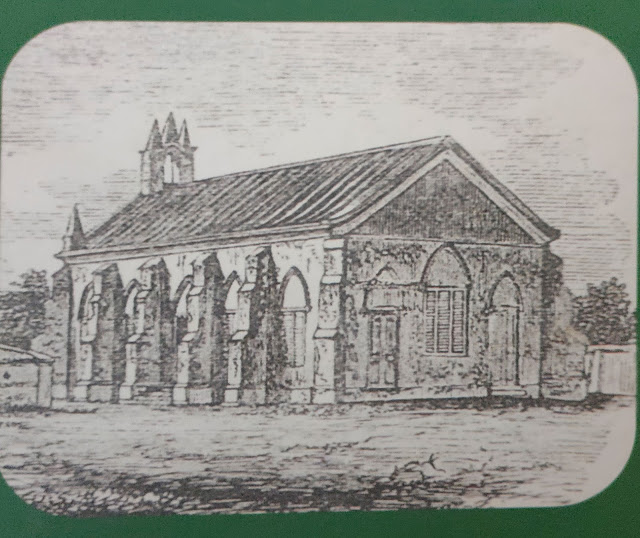those publishers and their wonderful books of languages
How did they manage to achieve this - Rhoda Alex, 10.8.2021
Some books just take me down a never-ending rabbit hole of curiosity. I stumbled on one such gorgeous book in the digital shelves of www.archive.org and remained lost there for a long time. It was titled “The Lord's prayer in five hundred languages” published in 1906. How did they manage so many fonts!!!
My freelance job is that of a book designer and I have put together books that use three different languages – Tamil, Hindi and English. Managing 3 languages in one book in the 21st century itself is a headache. One time the design software refused to recognize two non-English alphabets and so the entire font had to be changed.. that changed all the spacing and therefore the entire layout had to be checked again !!
So I just could not get around my head as to how they managed to publish 500 languages comprising of nearly 200 scripts! How did they procure drawings of the script, manufacture the typeset and proof read etc etc etc. The original publishers of this book were Gilbert & Rivington of London – a massive organization known for their unrivaled collection of oriental typefaces. The preface is written by one Mr.Reinhold Rost whom Wikipedia describes as a German orientalist, a professor in England and also the head librarian at the India Office Library, London. Ofcourse India! He so beautifully describes the energy behind the book - it was not the politics of power but religious ambitions and missionary endeavors across the world. Taking the Bible across the world made the colonizers experts in translation and printing. It is not surprising they choose to print extracts from the Bible in these books. Publishers vied with each other to come up with the largest language compilations.
Naturally I turn to the pages that feature Indian languages and especially Tamil my mother-tongue. Yes I am partial towards it. I cannot help but admire the well defined lines and sturdy nature of the script when compared to many other scripts that may look more aesthetic, flowy, geometric and even curvy! Only after looking at this book I realized that every script has a long history like that of a language.
In the preface, Reinhold Rost writes –“There has been a Romanizing invasion ... on several of the ancient literary languages of Asia.” The great urgency to print the Bible in every language the colonizers had access to, forced them to use their own script in cases where languages did not have a corresponding script. Many times this proved to be a bad solution because the alphabets and phonetics of the English (Roman script) did not match the sounds of certain languages at all.
However, the book has many Indian languages and dialects listed in multiple scripts. For instance Badaga, a language spoken in the Nilgris Hills is printed both in the Tamil script and the Telugu script. There are languages from India such as Bhandelkandi, Bhatneri, Bhojingjida, Chamba, Dogri, Garo and it goes on and on … It is rather strange to glimpse into the great diversity of the languages and multiple scripts used in India from this book which is a by-product of colonial rule.
Even 100 years earlier to this book, a similar book titled Mithridates has been published in Berlin. Many languages from the sub-continent including Tamil find a place in it. This brings to mind Bartholomew Ziegenbalg the young missionary from Germany who first translated the Bible in Tamil and succeeded printing it in the Tamil script in 1715 from a printing press that he set up in Porayur near Tarangambadi. He also wrote many books that studied South Indian customs, culture, medicine, languages and grammar. Gramatica Damulica is his book on the grammar of Tamil language.
Maybe, the need of the hour is a jantar mantar of a book that has the words ‘choose love, not hate’ compiled in all the languages and dialects of India. Jantar Mantar simply means a calculating instrument.
_____
_____
The lords prayer in Sanskrit - written in various scripts like Bengali, Malayalam, Oriya and Telugu
Tamil written in Arabic .. This is from another book titled Book of a thousand tongues
Rhoda Alex , 2021







Comments
Post a Comment